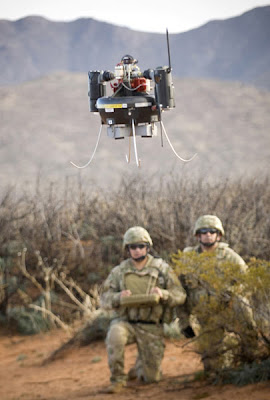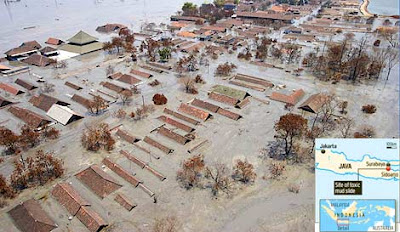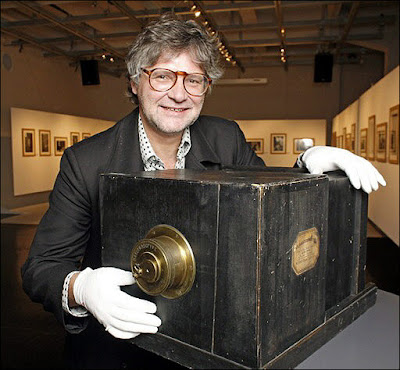1950:

1970's (Pepsi can only):


1948:

[Sources: Flickr, flickr, usasoda]


ST. JOHN'S – Marine scientists in Canada and abroad are puzzled by bizarre photographs that appear to show the skeleton of a large mammal jutting out of an iceberg that recently drifted past Newfoundland's east coast.
The six pictures show what looks like a brown rib cage and spinal column, slightly bent, sticking out of a crust of ice.
But researchers throughout Canada, Greenland and Norway are unable to determine the origin of the skeleton, said Garry Stenson, a marine mammal scientist with the federal Fisheries Department.
"It's definitely unusual," Stenson said today. "It's not something that I've encountered before."
His colleagues have been debating whether the carcass belongs to a bearded seal, a walrus or a beluga whale. But without the actual specimen in his hands, Stenson said he can't resolve the mystery.
"It would be really nice to get a copy, a sample, a hold of it, but at this point we're not quite sure what it is," he said.
The photos were taken near Newtown, in Bonavista Bay, by Eli and Donna Norris on the weekend of May 26, said Ruth Knee, a friend who forwarded them to the Fisheries Department in hopes of identifying the bones.
The Norris family couldn't be reached for comment today.
Knee said the retired couple didn't want to be interviewed, but said she could vouch for the authenticity of the photos.
"Not everybody wants their 15 minutes of fame," Knee said.
Stenson said he is fairly certain the pictures aren't a hoax.
"If it was Photoshopped, it's a damn good job," he said. "The way that it's laying there, with what looks to be part of it underwater, looks authentic."
Stenson said he was told the backbone was roughly 2.4 metres out of the ice, leading him to believe the spine belonged to a large mammalian creature.
But he is uncertain whether the animal would have fallen into a crevasse in an iceberg and then got stuck, or if it simply died on an ice floe and later became embedded by other pans of ice.
"It could be a walrus, for example, that died and is laying on its back and the pressure of the snow and the ice has flattened those ribs," he said.
The bones don't appear very weathered, and it looks like there may be tissue still attached to them. Stenson wouldn't speculate on how old they are because the ice may have preserved them for years.
The iceberg's location, or if it was still intact, weren't known Monday.
"Sometimes a lot of my mysteries never get solved," Stenson said with a sigh.
The province's coastline has been the setting of a number of strange discoveries in the past.
In July 2001, residents of St. Bernard's, in Fortune Bay, were awed by a seven-metre carcass that washed ashore. Because of its decomposed state, researchers were initially unable to determine what it was, prompting locals to nickname it "the sea monster."
But two weeks later a Memorial University biologist confirmed through DNA testing that it was a decaying sperm whale.
[Link via Thestar]
SEATTLE (AP) -- A 27-year-old man described as one of the world's most prolific spammers was arrested Wednesday, and federal authorities said computer users across the Web could notice a decrease in the amount of junk e-mail.
Robert Alan Soloway is accused of using networks of compromised "zombie" computers to send out millions upon millions of spam e-mails.
"He's one of the top 10 spammers in the world," said Tim Cranton, a Microsoft Corp. lawyer who is senior director of the company's Worldwide Internet Safety Programs. "He's a huge problem for our customers. This is a very good day."
A federal grand jury last week returned a 35-count indictment against Soloway charging him with mail fraud, wire fraud, e-mail fraud, aggravated identity theft and money laundering.
Soloway pleaded not guilty Wednesday afternoon to all charges after a judge determined that - even with four bank accounts seized by the government - he was sufficiently well off to pay for his own lawyer.
He has been living in a ritzy apartment and drives an expensive Mercedes convertible, said prosecutor Kathryn Warma. Prosecutors are seeking to have him forfeit $773,000 they say he made from his business, Newport Internet Marketing Corp.
A public defender who represented him for Wednesday's hearing declined to comment.
Prosecutors say Soloway used computers infected with malicious code to send out millions of junk e-mails since 2003. The computers are called "zombies" because owners typically have no idea their machines have been infected.
He continued his activities even after Microsoft won a $7 million civil judgment against him in 2005 and the operator of a small Internet service provider in Oklahoma won a $10 million judgment, prosecutors said.
U.S. Attorney Jeff Sullivan said Wednesday that the case is the first in the country in which federal prosecutors have used identity theft statutes to prosecute a spammer for taking over someone else's Internet domain name. Soloway could face decades in prison, though prosecutors said they have not calculated what guideline sentencing range he might face.
The investigation began when the authorities began receiving hundreds of complaints about Soloway, who had been featured on a list of known spammers kept by The Spamhaus Project, an international anti-spam organization.
The Santa Barbara County, Calif., Department of Social Services said it was spending $1,000 a week to fight the spam it was receiving, and other businesses and individuals complained of having their reputations damaged when it appeared spam was originating from their computers.
"This is not just a nuisance. This is way beyond a nuisance," Warma said.
Soloway used the networks of compromised computers to send out unsolicited bulk e-mails urging people to use his Internet marketing company to advertise their products, authorities said.
People who clicked on a link in the e-mail were directed to his Web site. There, Soloway advertised his ability to send out as many as 20 million e-mail advertisements over 15 days for $495, the indictment said.
The Spamhaus Project rejoiced at his arrest.
"Soloway has been a long-term nuisance on the Internet - both in terms of the spam he sent, and the people he duped to use his spam service," organizers wrote on Spamhaus.org.
Soloway remained in federal detention pending a hearing Monday.
[Source]
Time warp anyone? English art fans visiting the 19th century Belsay Hall can interact with images of themelves from a few seconds earlier by staring into the slo-mo Hereafter mirror created by United Visual Artists
What appears to be a conventional looking glass is in fact a flat video display embedded with a hidden high-speed video camera and a massive terabyte hard drive, reports Pixelsumo.
The camera enables the viewer to witness instant replay in slow motion while simultaneously viewing blurred real-time images.
In a few years, skim milk may come straight from the cow, it was reported this week.
Skim milk is usually produced by taking all of the fat out of regular milk, but in 2001, researchers found a cow that skipped that step. While screening a herd of cows, they found one with a natural gene mutation that makes her produce lower-fat milk than a normal cow.
Marge, as researchers later named her, makes milk that has 1 percent fat (as compared to 3.5 percent in whole milk) and is high in omega-3 fatty acids. And remarkably, Marge’s low-fat milk still has the same delicious taste as conventionally produced low-fat milk, according to the report in Chemistry & Industry magazine.
The low saturated fat content of Marge’s milk also means that butter made from it is spreadable right out of the fridge, while most butter has to come to room temperature before it can be spread on toast.
After researchers found that Marge’s daughters also produced low-fat milk, they surmised that the genetic trait was dominant and planned to breed herds of skim milk-producing cows. (Marge and her offspring live in New Zealand.)
ViaLactia, the company that owns Marge, expects the first commercial herd of cows supplying natural low-fat milk and spreadable butter for the market by 2011.
But because cows are normally selected for breeding because they give a high milk yield, this new selection criteria could mean the skim milk cows would produce less milk, said Ed Komorowski, technical director at Dairy UK and who is not affiliated with the research—so more cows could be needed to produce the same amount of milk.
And “normal” cows wouldn’t disappear, he told LiveScience, as their milk would still be needed to make fattier products such as cream.
The Associated Press contributed to this report.
[Source]












CHARLESTON, W.Va. (AP) -- Proof that a 12-foot creature with fiery red eyes spooked Braxton County schoolchildren in 1952. Proof that aliens crashed a spaceship near Roswell, N.M., in 1947. Proof that the U.S. military engaged alien spaceships in battle over the Atlantic Ocean more than 50 years ago.
"You're going to see some hard evidence" at the Flatwoods Monster 55th Anniversary and Flying Saucer Extravaganza on Sept. 7-8 in Charleston, said promoter Larry Bailey. "That's a promise. That's not just promotional talk."
The UFO conference coincides with the 60th anniversary of an unexplained sighting of a crashed aircraft in New Mexico that is still a source of controversy and speculation of a government coverup. It's also the 55th anniversary of sightings of a noxious-odor-emitting monster in Flatwoods in Braxton County.
Freddie May, one of the boys who saw the monster after a fireball fell from the sky in September 1952, is scheduled to attend. He will refute those who dismiss the monster as a hoax and others who say it was a gaseous ball that formed during a meteor shower.
Also on the lineup is author-illustrator Frank Feschino, who penned "The Braxton County Monster: The Cover-Up of The Flatwoods Monster." His follow-up book, "Shoot Them Down," details aerial combat he says was waged in 1952 between U.S. aircraft and alien ships over the ocean.
Feschino spent 14 years researching the sighting and plans to present a 53-minute documentary on his findings at the conference.
Staton Friedman, a former nuclear physicist who helped investigate the Roswell crash and has published more than 70 papers on UFOs, is also scheduled to attend.








 The U.S. Army tends to be a poor cousin among Defense Department kin when it comes to high-tech systems; the big-bucks, high-profile technology programs tend to accrue to the Navy and the Air Force. It's also looking to take advantage of developments in areas from robotics to high-speed networks.
The U.S. Army tends to be a poor cousin among Defense Department kin when it comes to high-tech systems; the big-bucks, high-profile technology programs tend to accrue to the Navy and the Air Force. It's also looking to take advantage of developments in areas from robotics to high-speed networks. Enter the Future Combat Systems program, the Army's largest modernization initiative. Now about four years old, the program envisions a family of high-tech gear including sensors, aerial drones, and manned and unmanned ground vehicles, all fully networked and linked to individual soldiers. Pictured here in a recent training exercise is the program's Class I unmanned aerial vehicle; the UAV is intended to help dismounted soldiers with reconnaissance, surveillance and target acquisition.
While the timeline for developing the FCS systems extends well into the next decade, the Army hopes to get some components deployed as early as fiscal year 2008, which starts in October. And therein lies a very important rub.
Credit: U.S. Army


 Six months later, on the day she gave birth, an embankment, hastily built to contain the hot mud, burst and later swallowed her home.
Six months later, on the day she gave birth, an embankment, hastily built to contain the hot mud, burst and later swallowed her home.

In the 12th signed statement released by the Cuban leader in recent weeks, Castro accused Bush of "faking rationality" and manipulating U.S. public opinion.
"Just yesterday, Bush bragged about having won the battle over his adversaries in Congress," Castro wrote in the wandering four-page statement. "He has $100 billion, all the money he needs to duplicate, however he wishes, the sending of American troops to Iraq and continue the slaughter."
The $120 billion bill approved Thursday by the U.S. House 280-142 funds the war through September and sets no date for a troop pullout to begin. The Senate approved it 80-14, and Bush signed it Friday.
"Meanwhile, the region's problems get worse," Castro wrote, referring to the Middle East.
"Bush is an apocalyptic person. Look at his eyes, his face and his obsessive preoccupation with pretending that all he sees on the 'invisible screens' is spontaneous," Castro wrote in an apparent reference to the use of teleprompters.
The 80-year-old Castro is recovering from a series of emergency intestinal surgeries and has not been seen in public for nearly 10 months.
His previous statements have been published the following day on the front pages of Cuba's two main state-run newspapers and read over and over again on government radio and television stations.
Most of Castro's recent editorials have blasted U.S.-backed plans to use food crops for biofuels, though Cuba's "maximum leader" on Wednesday revealed key details about his health and recovery. He wrote that he underwent not one but several surgeries, the first of which did not go well and has slowed his recuperation.
Castro stunned Cuba and the world in late July, when he announced he was seriously ill and was temporarily stepping aside in favor of a provisional government headed by his brother Raul, the 75-year-old defense minister.
Though his condition and exact ailment are state secrets, top Cuban officials have insisted for months that Castro is on the mend. He has given no indication of if or when he might resume his full presidential responsibilities. [Source]
Theodor Meron, who wrote the memo as the Israeli foreign ministry's legal advisor at the time, said "I believe I would have given the same opinion today," according to The Independent newspaper.
With Israel now celebrating the 40th anniversary of the war, the 76-year-old Meron, who went on to become a leading international jurist, challenges Israel's long-held argument that settlements do not violate international law.
The Independent said it obtained a copy of his legal opinion, which was marked "Top Secret" and "Extremely Urgent."
Quoting its author, the newspaper said the memo concluded "that civilian settlement in the administered territories contravenes the explicit provisions of the Fourth Geneva Convention."
Meron also told the newspaper that then foreign minister Abba Eban was "sympathetic" to his view that civilian settlement would go against the Hague and Geneva conventions governing the conduct of occupying powers.
But the Labour government at the time progressively approved the settlements in the captured West Bank despite the secret legal opinion which had been passed on to then prime minister Levi Eshkol.
Such actions paved the way for at least 240,000 Israelis to settle in the the West Bank.
Meron, who served as president of the International Criminal Tribunal for the former Yugoslavia until 2005, was also quoted as telling the Independent that the settlements have proven to be a real stumbling block.
"It's obvious to me that the fact that settlements were established and the pace of the establishment of the settlements made peacemaking much more difficult," he was quoted as saying.
In the Six Day War in June 1967, Israel captured the Sinai peninsula from Egypt, the Golan Heights from Syria and the West Bank and East Jerusalem from Jordan. [Source]



[Link] When Intel asked designers to build a better laptop, its instructions were simple, really. The machine has to be fashionable, able to connect to all manner of wireless networks, and full of the latest, fastest computing capabilities. Oh yes, and make it as thin as Motorola's Razr. Its own engineers in conjunction with Ziba Design in Portland, Ore., rose to the challenge.
The result, code-named Intel mobile Metro notebook, is less than 0.7 inches thick—about one-quarter of an inch thicker than Motorola's (MOT) iconic cell phone, making it the world's thinnest notebook. And at 2.25 pounds, it's also one of the lightest small-sized portable computers. Other features include always-on Internet connectivity via various wireless technologies.
And unlike other computer prototypes, including some from Intel, this one actually may line the shelves of a retailer before long. Intel hasn't announced an official release date but people familiar with the matter say a PC maker will announce plans to start manufacturing the machine later this year.

If the claims are accurate, Jamison Stone's trophy boar would be bigger than Hogzilla, the famed wild hog that grew to seemingly mythical proportions after being killed in south Georgia in 2004.
Hogzilla originally was thought to weigh 1,000 pounds and measure 12 feet in length. National Geographic experts who unearthed its remains believe the animal actually weighed about 800 pounds and was 8 feet long.
Regardless of the comparison, Jamison is reveling in the attention over his pig, which has a Web site put up by his father—http://www.monsterpig.com —that is generating Internet buzz.
"It feels really good," Jamison, of Pickensville, said in a telephone interview with The Associated Press. "It's a good accomplishment. I probably won't ever kill anything else that big."
Jamison, who killed his first deer at age 5, was hunting with father Mike Stone and two guides in east Alabama on May 3 when he bagged Hogzilla II. He said he shot the huge animal eight times with a .50- caliber revolver and chased it for three hours through hilly woods before finishing it off with a point-blank shot.
Through it all there was the fear that the animal would turn and charge them, as wild boars have a reputation of doing.
"I was a little bit scared, a little bit excited," said Jamison, who just finished the sixth grade on the honor roll at Christian Heritage Academy, a small, private school.
His father said that, just to be extra safe, he and the guides had high-powered rifles aimed and ready to fire in case the beast with 5- inch tusks decided to charge.
With the pig finally dead in a creek bed on the 2,500-acre Lost Creek Plantation, a commercial hunting preserve in Delta, trees had to be cut down and a backhoe brought in to bring Jamison's prize out of the woods.
It was hauled on a truck to the Clay County Farmers Exchange in Lineville, where Jeff Kinder said they used his scale, which was recently calibrated, to weigh the hog.
Kinder, who didn't witness the weigh-in, said he was baffled to hear the reported weight of 1,051 pounds because his scale—an old, manual style with sliding weights—only measures to the nearest 10.
"I didn't quite understand that," he said.
Mike Stone said the scale balanced one notch past the 1,050-pound mark, and he thought it meant a weight of 1,051 pounds.
"It probably weighed 1,060 pounds. We were just afraid to change it once the story was out," he said.
The hog's head is now being mounted on an extra-large foam form by Jerry Cunningham of Jerry's Taxidermy in Oxford. Cunningham said the animal measured 54 inches around the head, 74 inches around the shoulders and 11 inches from the eyes to the end of its snout.
"It's huge," he said. "It's just the biggest thing I've ever seen."
Mike Stone is having sausage made from the rest of the animal. "We'll probably get 500 to 700 pounds," he said.
Jamison, meanwhile, has been offered a small part in "The Legend of Hogzilla," a small-time horror flick based on the tale of the Georgia boar. The movie is holding casting calls with plans to begin filming in Georgia.
Jamison is enjoying the newfound celebrity generated by the hog hunt, but he said he prefers hunting pheasants to monster pigs.
"They are a little less dangerous."[Source: breitbart via AP]

Sony Corp. released video of the new 2.5-inch display Friday. In it, a hand squeezes a display that is 0.3 millimeters, or 0.01 inch, thick. The display shows color images of a bicyclist stuntman and a picturesque lake.
Although flat-panel TVs are getting slimmer, a display that's so thin it bends in a human hand marks a breakthrough.
Sony said it has yet to decide on commercial products using the technology.
"In the future, it could get wrapped around a lamppost or a person's wrist, even worn as clothing," said Sony spokesman Chisato Kitsukawa. "Perhaps it can be put up like wallpaper."
Tatsuo Mori, an engineering and computer science professor at Nagoya University, said some hurdles remained, including making the display bigger, ensuring durability and cutting costs.
But he said the display's pliancy is extremely difficult to imitate with liquid crystal displays and plasma display panels - the two main display technologies now on the market.
"To come up with a flexible screen at that image quality is groundbreaking," Mori said. "You can drop it, and it won't break because it's as thin as paper."
The new display combines two technologies: Sony's organic thin film transistor, which is required to make flexible displays, and organic electroluminescent display.
Other companies, including LG. Philips LCD Co. and Seiko Epson Corp., are also working on a different kind of "electronic paper" technology, but Sony said the organic electroluminescent display delivers better color images and is more suited for video.
Sony President Ryoji Chubachi has said a film-like display is a major technology his company is working on to boost its status as a technological powerhouse.
In a meeting with reporters more than a year ago, Chubachi boasted Sony was working on a technology for displays so thin it could be rolled up like paper. He had predicted that the world would stand up and take notice.
Some analysts have said Sony, which makes Walkman portable players and PlayStation 3 video game machines, had fallen behind rivals in flat-panel technology, including Samsung Electronics Co. of South Korea and Sharp Corp. of Japan.
But Sony has been marking a turnaround under Chubachi and Chief Executive Howard Stringer, the first foreigner to head Sony, by reducing jobs, shuttering unprofitable businesses and strengthening its flat TV offerings. [Via AP]
Or maybe it’s a social circle situatoin. Maybe a house party. Maybe a dinner party. A seminar. A yoga class. An improv comedy class. A work function. A dance class.
In a non-social circle situation, you can approach the girl right away. Or you can talk to other people in the room. It’s not as big a deal.
But in social circle situations, sometimes you want to bide your time. You still want to be the most social guy in the room, but there’s no need to show interest right away. Biding your time can be in your favor.
At this point, I believe that body language is paramount. What you do with your eye gaze and body language orientation will demonstrate your power in this situation.
If you guys are like me, you love to look at beautiful women. I check out hot girls all the time.
Men are built differently. We get gratification from visual stimulation.
That hot girl walks by and I check her out. She walks by again and I check her out again. I keep looking. I enjoy looking.
Not that women don’t like looking at men, but it’s not as huge an urge. They don’t get as much pleasure as men do. Multiple studies have shown that the brain is not as visually stimulated seuxally in women as in men.
So what do I do in a social situation? I check the girl out. And I keep checking her out. Even though I already have the information.
I know she’s hot. I know I’m attracted to her.
This is the point at which I advise to NOT keep checking her out. After you initially look at her, do not keep looking her way.
Do not continue to “steal glances.” Do not continue to look at her without speaking to her. She can sense it. And so can everyone else in the room.
Your eye gaze has power. You gain confidence from people looking at you. And you get people looking at you when you are confident.
Lance Mason, founder of Pickup 101, talks about this concept as well. The manager of a restaurant will get attraction from all the waitresses in the restaurant simply because whenever he walks across the restaurant, all eyes are on him. Everyone is watching to see what he’s doing.
In studying social geometry in primates, Michael Chance reveals that in any social interaction
There is a persistent focusing of attention by all subordinate members of rank-ordered primate groups toward the alpha or dominant animal, usually without its taking specific action to attract this constant attention.
And this makes sense. Everybody watches the leader to see what he’s going to do next.
Think about this in a social situation. Instead of you stealing glances at the attractive girl, every once in a while you catch her looking at you.
How do you feel at that point? Pretty good, right? You start to gain confidence in that situation.
I’m not saying you should never look at an attractive woman. If and when you do look at her, look deliberately and slowly. Do not look away if she looks at you. Let her look away first.
And there are other aspects to being attractive in social situations, such as speaking loudly, being the most fun guy in the room, taking the lead. But pay careful attention where you place your gaze. Your gaze has power and should be treated as such.
Once you finally speak to the girl, whether you are introduced to her or take the opportunity to walk up to her and say “I don’t believe we’ve met,” your interest in her will be seen as interest from an equal or from an attractive cool guy, rather than someone already completely sold on her for her beauty. [Via ApproachAnxiety]
Oculus, the Californian firm which developed the water - made by filtering it through a salt membrane - says it kills viruses, bacteria and fungi.
It is also effective against MRSA and UK trials are being carried out on patients with diabetic foot ulcers, New Scientist magazine reported.
The key ingredient of the water, called Microcyn, are oxychlorine ions - electrically charged molecules which pierce the cell walls of free-living microbes.
The water can only kill cells it can completely surround so human cells are spared because they are tightly bound together in a matrix.
It is made by taking purified water and passing it through a semi-permeable sodium chloride membrane, which produces the oxychlorine ions.
One study showed that patients with advanced foot ulcers who were treated with the water, alongside an antibiotic had an average healing time of 43 days compared with 55 days in those who received standard treatment
Bleach-resistant bacteria
The results were presented at a Global Healthcare biomedical conference in Monte Carlo.
Bleach also contains a number of electrically charged molecules such as hypochlorite but in much higher concentrations than in the water.
However, US studies have shown the water kills 10 strains of bleach-resistant bacteria.
Professor Andrew Boulton, from Manchester Royal Infirmary, who is conducting one of the early UK trials, said the treatment seemed promising.
"Hopefully it will confirm our initial good experience."
About 15% of diabetic foot ulcers result in amputation.
Diabetes UK care adviser Tracey Kelly said: "The healing of wounds is a major problem for people with diabetes who do not have good blood glucose control or have circulatory problems.
"We would welcome any safe effective treatment which could help people with diabetes make a swift recovery.
"This research is very interesting and we look forward to the trial results."
Help the Aged spokesman Mike Foster said: "The team involved is a credible one and wound healing is a major area in the health of older people.
"There is an urgent need to understand the biology of our repair systems so that we can improve treatments that will help to restore more people's health and independence."
[Newscientist via BBC]






